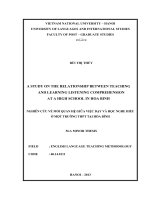Study on the association between tdrd1 rs541192490 and male infertility in a vietnamese population
Bạn đang xem bản rút gọn của tài liệu. Xem và tải ngay bản đầy đủ của tài liệu tại đây (2.06 MB, 74 trang )
VIETNAM NATIONAL UNIVERSITY OF AGRICULTURE
FACULTY OF BIOTECHNOLOGY
--------🙡 🕮 🙣--------
UNDERGRADUATE THESIS
“STUDY ON THE ASSOCIATION BETWEEN
TDRD1 rs541192490 AND MALE INFERTILITY IN
A VIETNAMESE POPULATION”
HANOI – 2022
VIETNAM NATIONAL UNIVERSITY OF AGRICULTURE
FACULTY OF BIOTECHNOLOGY
--------🙡 🕮 🙣--------
UNDERGRADUATE THESIS
“STUDY ON THE ASSOCIATION BETWEEN
TDRD1 rs541192490 AND MALE INFERTILITY IN
A VIETNAMESE POPULATION”
STUDENT
: NGUYEN MINH NGUYET
CLASS
: K62CNSHE
MAJOR
: BIOTECHNOLOGY
SUPERVISORS
: NGUYEN THUY DUONG, PhD
: TRAN THI HONG HANH, MSc
HANOI – 2022
COMMITMENT
I declare that this thesis has been composed solely by myself and has not been
submitted, in whole or in part, for any other degree or professional qualification.
I confirmed that all methods, data, and results mentioned in this thesis are true
and all references are fully cited according to standard reference practice.
Hanoi, February 22nd, 2022
Student
Nguyen Minh Nguyet
i
ACKNOWLEDGEMENT
I would like to express my deepest gratitude to my supervisor, Dr. Nguyen Thuy
Duong, who permitted me to work in Human Genomics Laboratory as a research
student to conduct my undergraduate thesis. While doing my thesis, she guided,
supported and provided favorable conditions that helped me learn more knowledge in
molecular biology, especially in research methods, then achieve targeted results. I also
want to thank MSc. Tran Thi Hong Hanh for her monitoring and instruction to my study
progression.
I want to appreciate my sincere to all staff at Human Genomic Laboratory for
their assistance and mentoring. Especially, I want to express my thanks to MSc. Duong
Thi Thu Ha for her careful and precious guidance, which was extremely valuable for
my theoretical and practical study.
I would like to thank the Vietnam National University of Agriculture and Faculty
of Biotechnology for providing a helpful chance to do an undergraduate thesis at the
Institute of Genome Research, which is a good opportunity to learn and experience
after studying in the lecture hall.
Last but not least, I am strongly grateful for my family’s support and
encouragement throughout my study journey. Without them, my thesis can not be
completed.
Student
Nguyen Minh Nguyet
ii
CONTENTS
COMMITMENT ............................................................................................................. i
ACKNOWLEDGEMENT ............................................................................................. ii
CONTENTS ..................................................................................................................iii
LIST OF ABBREVIATIONS ........................................................................................ v
LIST OF TABLES ........................................................................................................ vi
LIST OF FIGURES ..................................................................................................... vii
Part 1: INTRODUCTION .............................................................................................. 1
Part 2: LITERATURE REVIEW ................................................................................... 3
2.1.
General concepts ............................................................................................... 3
2.2.
Clinical evaluation ............................................................................................. 4
2.3.
Causes ................................................................................................................ 7
2.3.1. Physical and sexual factors ...................................................................... 7
2.3.2. Environmental and lifestyle factors ......................................................... 8
2.3.3. Genetic factors ......................................................................................... 9
2.4.
TDRD1 and male infertility ............................................................................. 10
2.5.
Principle of PCR-RFLP method for SNP detection ........................................ 14
2.6.
International and Vietnam research................................................................. 16
2.6.1. International research ............................................................................. 16
2.6.2. Vietnam research ................................................................................... 17
Part 3: MATERIALS AND METHODS ..................................................................... 19
3.1.
Subjects............................................................................................................ 19
3.2.
Materials .......................................................................................................... 19
3.3.
Methods ........................................................................................................... 20
3.3.1. Total DNA extraction from whole blood samples ................................. 20
3.3.2. Primer design ......................................................................................... 21
3.3.3. Amplification of the target DNA region ................................................ 21
3.3.4. PCR-RFLP ............................................................................................. 22
3.3.5. PCR Purification .................................................................................... 23
iii
3.3.6. Sanger sequencing ................................................................................. 24
3.3.7. Statistical analysis .................................................................................. 25
Part 4: RESULTS ......................................................................................................... 26
4.1.
Total DNA extraction from whole blood samples .......................................... 26
4.2.
Amplification of the target DNA region ......................................................... 26
4.3.
SNP Genotyping .............................................................................................. 27
4.4.
Sanger sequencing ........................................................................................... 28
4.5.
Association between TDRD1 rs541192490 and male infertility .................... 29
Part 5: DISCUSSION................................................................................................... 31
Part 6: CONCLUSION ................................................................................................ 33
REFERENCES............................................................................................................. 34
APPENDIX .................................................................................................................. 47
iv
LIST OF ABBREVIATIONS
AZF
Azoospermia factor
CBAVD
Congenital bilateral absence of the vas deferens
CF
Cystic fibrosis
CFTR
Cystic Fibrosis Transmembrane Conductance Regulator
CI
Confidence interval
DNA
Deoxyribonucleic acid
FSH
Follicle-stimulating hormone
GWAS
Genome-wide association study
HWE
Hardy-Weinberg Equilibrium
LINE
Long interspersed nuclear elements
NOA
Non-obstructive azoospermia
OR
Odds ratio
PCR
Polymerase chain reaction
PiRNA
Piwi-interacting RNA
Piwi
P-element-induced wimpy testis
RE
Restriction enzyme
RFLP
Restriction fragment length polymorphism
SHBG
Sex hormone-binding globulin
SNPs
Single nucleotide polymorphisms
TDRD1
Tudor domain-containing 1
WHO
World Health Organization
v
LIST OF TABLES
Table 2.1. The normal values for semen parameters over the years. ............................ 5
Table 3.1. The primer pair for amplification of TDRD rs541192490. ........................ 19
Table 4.1. Genotypes and allele frequency of TDRD1 rs541192490. ......................... 28
Table 4.2. Association between polymorphism TDRD1 rs541192490 and male
infertility....................................................................................................................... 29
vi
LIST OF FIGURES
Figure 2.1. piRNA biogenesis (Pek et al. , 2012). ....................................................... 12
Figure 2.2. Structure of the typical eTudor domain (PDB: 3OMC). ........................... 13
Figure 2.3. Restriction enzyme cleavage for SNP genotyping (Kim & Misra, 2007). 16
Figure 3.1. PCR reaction condition.............................................................................. 22
Figure 3.2. Recognition site of Psp1406I (AclI). ......................................................... 22
Figure 4.1. Total DNA of six samples in 1% agarose gel. .......................................... 26
Figure 4.2. PCR products amplified DNA region containing SNP TDRD1 rs541192490
on agarose gel 1%. ....................................................................................................... 27
Figure 4.3. Psp1406I (AclI) – digested PCR products of six samples on agarose gel
1.5%. ............................................................................................................................ 27
Figure 4.4. Genotyping result of TDRD1 rs541192490 using Sanger sequencing. .... 29
vii
Part 1: INTRODUCTION
In the recent decades, along with the population explosion, infertility has
become a major health concern resulting in substantial psychological and social
distresses (Bak et al., 2012). In Vietnam, a nationwide study of the National Hospital
of Obstetrics and Gynecology and Hanoi Medical University also showed an ominous
7.7% of infertility rate in the childbearing age group. Infertility affects 7% of the
global male partner and about 40-50% of all infertility cases are due to the “male
factor” (Sharlip et al., 2002; Dada et al., 2011; Krausz, 2011). The spermatogenic
defect is the most common form of male infertility and idiopathic primary testicular
dysfunction. Many genetic factors are considered to contribute to this complex
disease (Anawalt, 2013; Krausz et al., 2015). Spermatogenesis is a complex
differentiation process of cells transformation from spermatogonia to mature
spermatozoa, which is regulated by up to 2000 genes. About 20% of these genes are
found to be expressed only in male germlines (Schultz et al., 2003). Thus mutations
or genetic alterations in these genes may lead to abnormalities in spermatogenesis
resulting in male infertility (Stouffs et al., 2009).
Piwi-interacting RNAs (piRNAs) are novel non-coding RNAs that play an
essential role in spermatogenesis via piRNA biogenesis to protect the genomic DNA
from transposon elements (Klattenhoff & Theurkauf, 2008; Yan, 2009). Numerous
piRNA pathway-associated genes are found to be vital for the generation of piRNA
(Olivieri et al., 2010; Saito et al., 2010). In particular, the Tudor domain-containing
1 (TDRD1) gene is original from the Tudor gene encoding a protein that function in
the suppression of transposable elements during spermatogenesis (Chen et al., 2009;
Pillai & Chuma, 2012). It is located on the long arm of chromosome 10 at position
10q25.3, containing 30 exons. The knockout model in mouse revealed the mutation
in TDRD1 leading to complete male infertility due to spermatogenic defects (Chuma
1
et al., 2006). In addition, a previous study suggested an association between single
nucleotide polymorphism (SNP) rs77559927 in the TDRD1 gene and spermatogenic
impairment (Zhu et al., 2016).
Therefore, we decided to conduct the study "Study on the association between
TDRD1 rs541192490 and male infertility in a Vietnamese population" to achieve
two main purposes of determination:
1. The distribution of TDRD1 rs541192490 in the Vietnamese population.
2. The association between TDRD1 rs541192490 and male infertility in the
Vietnamese population.
2
Part 2: LITERATURE REVIEW
2.1.
General concepts
The International Committee for Monitoring Assisted Reproductive
Technology, World Health Organization (WHO) defines infertility as a disease of the
reproductive system that fails to conceive the clinical pregnancy after at least 1 year
of regular, unprotected sexual intercourse (Zegers-Hochschild et al., 2009). There are
two types of infertility. Primary infertility refers to couples who have not conceived
a child after at least 12 months of having sex without any birth control method.
Secondary infertility refers to couples who have been able to get one or more
pregnancies, but now are unable. Infertility is a psychological, economic, and
physiological disease-causing pain and stress, especially in a society like ours that
heavily emphasizes childbearing (Kumar & Singh, 2015). An estimate of a survey
reported during the time of 27-year, the age-standardized prevalence of infertility rose
annually in women and men by 0.37% and 0.291%, respectively (Sun et al., 2019).
In half of all infertility cases, the cause of a solely male factor accounts for 20-30%
and 20-30% due to a combination of both genders (Sharlip et al. , 2002). Male
infertility or infertility due to the "male factor" can be completed or partially defined
as subfertility referring to a male's inability to conceive a child with a fertile female
partner. It could be caused by a decrease in the number of spermatozoa
(oligozoospermia), a decrease in sperm motility (asthenozoospermia) (Curi et al.,
2003), a decrease in sperm vitality (necrozoospermia), an aberrant sperm morphology
(teratozoospermia), or a combination of these factors (Sharma, 2017).
Spermatogenic failure is the most severe form of male infertility affecting up
to 10% of all male infertility patients leading to non-obstructive azoospermia (NOA),
i.e. the absence of sperm in the ejaculate (Kumar, 2013; Chiba et al., 2016).
Spermatogenesis is one of the most crucial processes in the seminiferous tubules
wherein the haploid mature spermatozoa are produced from diploid cells (Neto et al.,
3
2016). A complex network of stages requiring approximately 74 days in humans
comprises four main phases: (1) mitotic proliferation and differentiation into
spermatocytes (spermatogoniogenesis), (2) meiotic division of spermatocytes to form
spermatids (meiosis) and maturation of spermatids (changing of shape and nuclear
content, spermatogenesis), finally releasing of highly specialized mature spermatozoa
are released into testicular tubule lumen (spermatogenesis) (Potter & Defalco, 2017).
Thousands of genes are involved in regulating and processing of spermatogenesis
(Sha et al., 2002; Schultz et al. , 2003; Schlecht et al., 2004; Ellis et al., 2007;
Zamudio et al., 2008). In recent years, the association between polymorphisms in the
specific genes relating to spermatogenesis and male infertility was mainly focused on
most published studies (Massart et al., 2012).
2.2.
Clinical evaluation
According to a recommendation of the American Society for Reproductive
Medicine and the European Association of Urology, an initial examination includes
a reproductive history and at least one semen analysis, whereas the American
Urological Association requires two (Jarow et al., 2011). If the initial results are
abnormal, a reproductive specialist will indicate a more thorough examination
(Agarwal et al., 2021).
A crucial step in infertility workup is taking a good medical history and
physical examination. These should include investigating frequency and duration of
sexual intercourse, previous fertility issues or successful pregnancies; any medical
history about sexually transmitted diseases, history of occupational or therapeutic
exposures to certain toxins and chemicals, childhood conditions (e.g., cryptorchidism,
postpubertal mumps orchitis, and testicular torsion or trauma) or problems with
childhood development; any serious illnesses such as diabetes, previous medication,
allergies, lifestyle factors (alcohol consumption, weight gain and smoking); and
relevant family history of fertility problems should be taken. A thorough of body
4
habitus, secondary sexual characteristics, and genitalia (testicles, penis, and
perineum) should be included in a physical examination which is a key part of male
infertility evaluation. (Leaver, 2016; Agarwal et al. , 2021).
Semen analysis remains the single most useful and fundamental investigation
with a sensitivity of 89.6% that can detect 9 out of 10 men with a genuine male
infertility problem (Butt & Akram, 2013). To detect infertility in men, specialists
considered the most significant of sperm parameters below the WHO standard
features consisting of low sperm concentration (oligozoospermia), poor sperm
motility (asthenozoospermia), and abnormal sperm morphology (teratozoospermia)
(Plachot et al., 2002). Oligozoospermia is the most significant cause of infertility
accounting for 90% of male infertility problems and there is a positive association
between the abnormal semen parameters and sperm count (Sabra & Al-Harbi, 2014).
The problems with sperm count, motility, and morphology stem from control
mechanism disorder, including pre-testicular, testicular, and post-testicular factors
(Iwamoto et al., 2007). Semen analysis reveals a piece of useful information for the
initial evaluation of the infertile male. It is not a test of fertility (Jequier, 2010).
Table 2.1. The normal values for semen parameters over the years.
WHO
WHO
WHO
WHO
WHO
manual 1st
manual 2nd
manual 3rd
manual 4th
manual 5th
edn (1980)
edn (1987)
edn (1992)
edn (1999)
edn (2010)
Volume
ND
≥2.0 mL
≥2.0 mL
≥2.0 mL
≥1.5 mL
Sperm
20–
Parameters
concentration 200x10⁶/mL
Total sperm
count
≥20x10⁶/mL ≥20x10⁶/mL ≥20x10⁶/mL ≥15x10⁶/mL
≥40x10⁶/mL ≥40x10⁶/mL ≥40x10⁶/mL ≥40x10⁶/mL ≥39x10⁶/mL
5
Sperm
mobility (%
≥60%
≥50%
≥50%
≥50%
≥32%
ND
≥50%
≥75%
≥75%
≥58%
≥80.5% *
≥50%
≥30% **
≥15% ***
≥4%
progressive)
Sperm
vitality (%)
Sperm
morphology
(% normal)
Note: Data extracted from the WHO Laboratory Manual for the Examination
and Processing of Human Semen and Sperm–Cervical Mucus Interaction. ND = not
defined. *Mean of fertile population. **Arbitrary Value. ***Value not defined but
strict criteria and in-vitro fertilization data suggest a 14% cutoff value.
According to large-scale molecular genetics research, about 3000 genes are
involved in male reproduction (Li & Zhou, 2012). About 15% of infertility cases in
men were affected by genetic defects (Krausz & Riera-Escamilla, 2018). A recent
review study showed a linkage between 78 genes and 92 phenotypes of male
infertility (Oud et al., 2019). Spermatogenic impairment was usually found in men
diagnosed with abnormalities in genetics resulting in severe oligozoospermia or
azoospermia and increased aneuploidy (Lipshultz & Lamb, 2007). Various
consequences relating to sperm injection failure, recurrent miscarriage or genetic
defects from father to children could be appeared due to any genetic mutations in
embryos. Based on the studies of these genes, the diagnostic tests to test male
infertility and crucial therapeutic strategies to overcome infertility have been
developed (Cariati et al., 2019).
In the diagnosis of male infertility, testicular mapping, genetic analysis at the
chromosomal level (karyotyping), androgen receptor gene mutations, cystic fibrosis
6
(CF) test and Y chromosome microdeletion analysis are commonly used (Krausz et
al., 2006). Therein, chromosomal analysis or karyotyping detects numerical or
structural chromosomal defects. With a prevalence of 12-15% in azoospermia, 5% in
severe oligozoospermia, and less than 1% in normal semen, karyotype anomalies are
the most common type of genetic defect (e.g., Klinefelter syndrome, known as 47,
XXY) (Van Assche et al., 1996; Ravel et al., 2006; Kumar et al., 2007). Otherwise,
Y chromosome microdeletion testing is recommended if patients with more severe
problems relating to sperm count (e.g., less than 5x106/mL) (Pryor et al., 1997;
Salonia et al., 2020). CF mutation testing is commonly used to detect mutations in
the CFTR gene on chromosome 7 to screen for or diagnose cystic fibrosis or to
identify carriers of this disease (Salonia et al. , 2020).
2.3.
Causes
Idiopathic male infertility accounts for almost 40% of cases. A variety of
reasons lead to male infertility, which, the most common causes include hormonal
deficiencies, physical and sexually transmitted infection issues, lifestyle,
environmental and genetic factors (Winters & Walsh, 2014; Krausz & RieraEscamilla, 2018; Lee & Ramasamy, 2018; Lotti & Maggi, 2018).
2.3.1. Physical and sexual factors
There are three main components contributing to the male reproductive
hormone axis, the hypothalamic, pituitary, and testicular glands which involve the
development and function of male sexual development with appropriate
concentration (Costanzo et al., 2014; Kuiri-Hanninen et al., 2014). Therefore,
infertility in men can be caused due to any abnormality in this system. For instance,
the gonadotropic releasing hormone was not produced by the brain resulting in a lack
of testosterone and stopping sperm production leading to a group of disorders, known
as hypogonadotropic hypogonadism (e.g. Kallman syndrome) (Cejko et al., 2014;
7
Lucas, 2014; Monaco et al., 2015; Ullah et al., 2017). If the pituitary gland provides
an insufficient concentration of luteinizing hormone and follicular stimulating
hormone (FSH), this can cause failure in producing testosterone and sperm of the
testes (Kiezun et al., 2014; Wdowiak et al., 2014). Otherwise, if these hormones are
too high, spermatogenesis can be disrupted (Ekman et al., 2014; Fukuda et al., 2014).
Physical issues can cause sperm production disruption, and the ejaculatory
pathway blocking, leading to infertility in men (Sengupta et al., 2018). These
problems include the enlargement of the sperm vessels (varicocele), testicular torsion
within the testicle sac or a variety of infections such as chronic and acute genital tract
infections, mumps viral infection, and sexually transmitted diseases like Gonorrhea
and Chlamydia. In addition, many sexual problems can affect male infertility known
as, erectile dysfunction, early ejaculation and the inability to ejaculate (Katib, 2015;
ệtỹnỗtemur et al., 2015).
2.3.2. Environmental and lifestyle factors
Environmental exposure to toxic chemicals and various lifestyle factors are
becoming the potential risks for male infertility. The environmental factors include
pesticides, herbicides, cosmetics, preservatives, cleaning materials, municipal and
private wastes, pharmaceuticals, industrial by-products, and hazardous substances in
the workplace (solvents, insecticides, adhesives, silicones and radiation) enter the
human body in various forms. The male reproductive system is highly sensitive to
these that lead to infertility (Singh & Pakhiddey, 2015).
Lifestyle factors such as age when starting a family, nutrition, weight
management, exercise, psychological stress, cigarette smoking, recreational and
prescription drug use, alcohol, and caffeine consumption can strongly impact overall
health and well-being and fertility (Johnson et al., 1984). Therein, sperm quality
degradation may be associated with cigarette smoking and alcohol consumption
(Gaur et al., 2010); (Petraglia et al., 2013), or an association of a decrease in sperm
8
concentration in men with an increase in saturated fat intake (Tsai et al., 2013).
Overuse of drugs (such as cocaine and cannabinoids) is significantly related to a
decrease in sperm concentration, and urinary testosterone level in men (Onyije,
2012).
2.3.3. Genetic factors
Up to now, only a few genetic defects have been proved as causes of
spermatogenic impairment (Nuti & Krausz, 2008). Genetic factors can be classified
into two groups: chromosomal abnormalities and single-gene mutations (Guney et
al., 2012; Stouffs et al., 2014). Chromosomal abnormalities are known as any changes
in genetic material at chromosome level, including numerical and structural
abnormalities (Wang et al., 2010). These changes become one of the major genetic
causes involved in male infertility.
The spermatogenesis aberrance can arise from the interference of numerical or
structural chromosomal mutations with the meiosis stage (Tuerlings et al., 1998).
Klinefelter’s syndrome (47, XXY) is an abnormality in the chromosomal number and
reciprocal translocation. Robertsonian translocations and pericentric inversions are
common forms of the structure of chromosomal defects (Tuerlings et al. , 1998; Dohle
et al., 2002). The deletions in Y-chromosome including AZFa, P5/proximal P1
(AZFb), P5/distal P1, b2/b4 (AZFc) and gr/gr deletions are determined to remove
many genes that have a role in the spermatogenesis resulting in spermatogenic failure
(Reijo et al., 1995; Vogt et al., 1996; Repping et al., 2002; Visser et al., 2009).
Spermatogenic failure is also due to monogenic disorders such as Kallman syndrome
and Noonan syndrome (XO/XY mosaic). The congenital bilateral aplasia of the vas
deferens (CBAVD) is part of cystic fibrosis defects causing azoospermia in the
ejaculate without any common clinical symptoms (Meschede & Horst, 1997).
Until now, many studies figured out the association between single-gene
polymorphisms and the fertility problem in men (Massart et al. , 2012). The CFTR
9
gene is mutated in 60-90% of patients with CBAVD, a form of obstructive
azoospermia in which the most common severe mutation is F508del, accounting for
60-70% (Georgiou et al., 2006; Ferlin et al., 2007). The sex hormone-binding
globulin (SHBG) gene has also been found to function in spermatogenesis through
the process of delivering sex hormones to target tissues and controlling androgens in
the testis. As concerns SHBG(TAAAA)n polymorphisms, shorter SHBG alleles were
associated with increased spermatogenic levels and higher sperm concentration, as
well as elevated levels of circulating SHBG, leading to higher free androgens to
stimulate the spermatogenetic process. (Lazaros et al., 2008). As concerns
SHBG(TAAAA)n polymorphisms, shorter SHBG alleles were associated with
increased spermatogenic levels and higher sperm concentration, as well as elevated
levels of circulating SHBG, leading to higher free androgens to stimulate the
spermatogenetic process. Several polymorphisms including (TA)n polymorphism,
AGATA haplotype caused by five single nucleotide polymorphisms (SNPs) in the
ESR1, and RsaI polymorphism on the ESR2 gene were also found to be related to
severe oligozoospermia with varied results (Maglott et al., 2005). The slight effects
on spermatogenesis of the partial deletions of the FSH receptor (FSHR) gene were
also demonstrated (Tapanainen et al., 1997)
2.4.
TDRD1 and male infertility
Along with several protein-coding genes are involved in spermatogenesis,
recent studies on gene knockout mouse and genome-wide association studies
(GWAS) indicated the important implication of non-coding RNAs in this complex
process (Yan, 2009; Kosova et al., 2012a). Piwi-interacting RNAs are one of three
major small non-coding RNAs class which are mainly expressed in the testis of
mammalian and play a key role in pachytene spermatocytes and spermatids during
the spermatogenesis process via binding with PIWI-family protein (Aravin et al.,
2006; Girard et al., 2006; Grivna et al., 2006a; Grivna et al., 2006b; Lau et al., 2006).
10
piRNAs play an essential role in the piRNA biogenesis to suppress selfish genetic
elements, such as transposons, and then to function in germ cell development.
(Bourc'his & Bestor, 2004; Aravin et al., 2007; Hutvagner & Simard, 2008). piRNAs
silence transposon elements at both transcriptional and post-transcriptional levels
based on a various mechanisms including degradation, chromatin remodeling, and
DNA methylation (Kuramochi-Miyagawa et al., 2004; Brower-Toland et al., 2007;
Carmell et al., 2007; Aravin et al., 2009). In Drosophila, a special genomic region
suppressing mobilization of the transposon, namely piRNA cluster loci, transcribes
for piRNAs (Malone & Hannon, 2009). The clusters may be transcribed bidirectionally or from only one direction. First, in the antisense direction of the
transposon RNAs, cluster transcripts are processed to produce piRNAs suppressing
active transposons. Second, piRNAs are generated from cellular and transposon
mRNAs. Then, piRNAs pathway are performed by two mechanisms: primary
processing, which occurs in either germline and somatic cells (Figure 2.1A); and
secondary processing, the ping-pong amplification loop which is found in only
germline cells (Figure 2.1B) (Pek et al., 2012).
11
Figure 2.1. piRNA biogenesis (Pek et al. , 2012).
(A) Primary processing of piRNAs. Mature Piwi-piRNA complex composed
of the Tudor domain proteins Yb and Vreteno (Vret); Piwi and Armitage
(Armi), which localize to the Yb body.
(B) The ping-pong cycle involves the Piwi subfamily proteins Aubergine
(Aub) and Argonaute 3 (Ago3).
The core components of the piRNA pathway include P-element-induced
wimpy testis (Piwi) proteins from the Argonaute (Ago) family and piRNAs. To
regulate the transposon silencing process, the larger ribonucleoprotein complexes are
formed via binding between the dimethylated (sDMA) or lysine residues of piwi
12
proteins and the Tudor domain of Tudor domain-containing proteins (TDRDs) that
act as a mediator or cofactor in the piRNA pathway (Chen et al. , 2009; Pillai &
Chuma, 2012). The extended 180-amino-acid Tudor (eTudor or eTud) domain
consists of a canonical Tudor domain, an a-helix linker, and a staphylococcal
nuclease-like domain (SN-like domain) (Figure 2.2) (Liu et al., 2010b). Therein, the
canonical Tudor domain is a conserved protein structure, a member of the ’Royal
Family’, containing ~60 amino acids characterized by a strongly bent anti-parallel β
sheet composed of five β-strands with a barrel-like fold (Sprangers et al., 2003). The
Tudor domain can recognize and bind to both methylated lysines and arginines of
target proteins (Kim et al., 2006). TDRDs are mainly expressed in germ cells and
involved in the development of germ cells via the binding with the piwi protein
(Juliano et al., 2011; Gainetdinov et al., 2018; Ozata et al., 2019).
Figure 2.2. Structure of the typical eTudor domain (PDB: 3OMC).
Since the Tudor genes were first discovered in Drosophila melanogaster in
1985, about 30 genes encoding a Tudor domain(s) including TDRD1 and TDRD9,
have been demonstrated to act in the piRNA pathway (Chen et al., 2011). TDRD1 is
an abbreviated name for Tudor domain-containing 1 located on the long arm of
chromosome 10 at position 10q25.3, containing 30 exons. This gene is abundantly
expressed in differentiating germ cells and it encodes a protein containing the Tudor
13
domain which functions in the transposon element suppression during
spermatogenesis.
The
localization
of
TDRD1
protein
corresponds
to
intermitochondrial cement, a specialized form of nuage, in spermatocytes and
chromatoid bodies in spermatids (Chuma et al., 2003). Based on mice knockout
models and mutagenesis, a potential hypomorphic allele, namely a targeted mutation
TDRD1 (TDRD1tm1), was approved to lead to complete male infertility due to
spermatogenic defects (Chuma et al. , 2006). Another study showed that TDRD1 and
TDRD9 form a complex with MILI (PIWIL2) and MIWI2 (PIWIL4), the Piwi
proteins, respectively. If mutations occurred in TDRD1 and TDRD9, LINE1, a
transposon member of the long interspersed nuclear elements (LINE), will be
activated during spermatogenesis with altered-piRNA pathway. The mutants in two
proteins lead to diminishing de novo DNA methylation in (pro)spermatogonia at
LINE1 promoters. Therefore, the interaction between the Tudor domain and piwi
proteins is crucial for transposon suppression at the transcriptional and posttranscriptional level (Deng & Lin, 2002; Chen et al. , 2009; Shoji et al., 2009; Chuma
& Nakano, 2013).
2.5.
Principle of PCR-RFLP method for SNP detection
Since polymerase chain reaction (PCR) was invented by Kary B. Mullis
(1985), it has been applied and refined allowing the expansion of many aspects of
molecular analysis (Saiki et al., 1985; Saiki et al., 1986; Mullis & Faloona, 1987).
This is a simple and useful technique to amplify DNA fragments for various purposes,
especially in detecting DNA polymorphism, then investigate the biological
significance in genetic variants in living organisms (Ota et al., 2007). Therein, SNPs
are the major type of polymorphisms in the human genome accounting for more than
90% of genetic variations (Collins et al., 1998).
Over the past 30 years, many different PCR-based methods have been
developed for SNP genotyping including hybridization (Iwasaki et al., 2002; Papp et
14
al., 2003), allele-specific PCR (Papp et al. , 2003), primer extension (O'meara et al.,
2002), oligonucleotide ligation (Pickering et al., 2002), direct DNA sequencing
(Chatterjee et al., 1999) and endonuclease cleavage after PCR amplification of a
desired SNP-containing region (Deng, 1988; Ota et al., 1991). Other SNP genotyping
technologies such as the TaqMan method (Livak et al., 1995; Livak, 1999), Invader
method (Kwiatkowski et al., 1999; Fors et al., 2000), MALDI-TOF method (Haff &
Smirnov, 1997), GeneChips (Gunderson et al., 2005) utilize with high throughput.
However, expensive equipment is needed to perform. Based on the purpose of each
study, SNP screening requires relatively low throughput.
The polymerase chain reaction-restriction enzyme length polymorphism (PCRRFLP) method is one inexpensive, simple, sensitive, reliable method for SNP
detection (Ota et al. , 2007). The genetic variation has been detected by the PCRRFLP method based on the endonuclease digestion of restriction enzyme of PCRamplified target DNA (Botstein et al., 1980; Ota et al. , 2007). In the point mutation
region, the restriction enzyme recognizes a particular sequence in the double-strand
DNA, called the recognition site and cleaves both strands into shorter fragments.
After the amplification DNA region containing the desired SNP, the PCR product is
incubated with appropriated enzyme (Kim & Misra, 2007). The SNP type is
determined from the number and size of the digested product by running on gel
electrophoresis. Though PCR-RFLP is a convenient laboratory technique for SNP
genotyping, it remains several limitations including target sequence containing no
recognition site or having more than one specific site for the commercial enzyme (Ota
et al. , 2007).
15
Figure 2.3. Restriction enzyme cleavage for SNP genotyping (Kim &
Misra, 2007).
2.6.
International and Vietnam research
2.6.1. International research
The existing sequencing technology and the introduction of SNP microarray
that was appeared in the 1990s permitted once more a shift in the research approaches
to investigate the genomes of infertile men and identify the novel genes associated
with male infertility by developing and applying large sets of polymorphic markers
for genomes screening (Xavier et al., 2021). A series of genetic variants and
polymorphisms have been proved to associate with spermatogenic dysfunctions
resulting in male infertility (Nishimune & Tanaka, 2006b; Nuti & Krausz, 2008). In
2009, a GWAS SNP-arrays-based study showed 21 SNPs associated with
azoospermia or oligospermia when analyzing over 300 000 SNPs in 92 oligospermia
and NOA patients and 80 healthy studies (Aston & Carrell, 2009). Two large
followed up studies were conducted in China which reported the association of some
SNPs and NOA patients with strict p-value < 1x10-8. The associations between a few
SNPs on PRMT6, PEX10 and SOX5 genes and NOA risk were found in 2927
individuals with NOA and 5734 controls from the Han Chinese population (Hu et al.,
2012). Another study also reported significant associations with SNPs mapping to
16

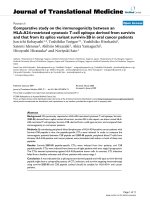

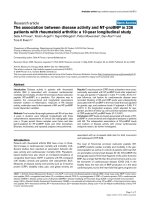
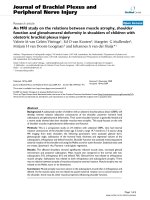


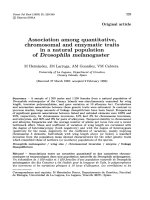
![gherghina et al - 2014 - a study on the relationship between cgr and company value - empirical evidence for s&p [cgs-iss]](https://media.store123doc.com/images/document/2015_01/02/medium_JKXoRwVO1T.jpg)
